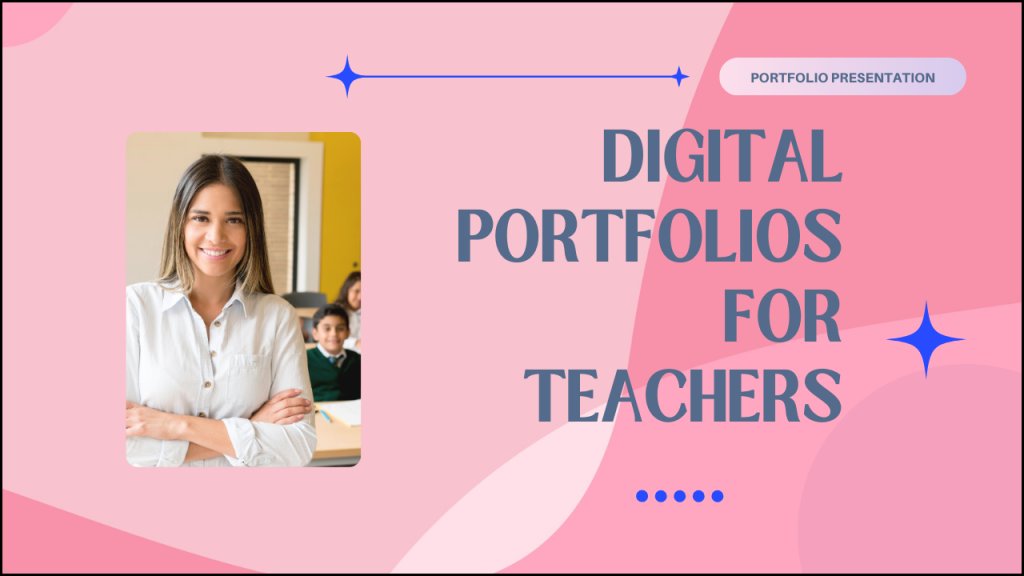
In the evolving landscape of education, the way teachers present their qualifications, achievements, and teaching philosophy is also changing. Gone are the days when resumes and printed certificates were the only proof of professional capability. Today, digital portfolios are redefining how educators showcase their skills, experiences, and creativity. These modern tools not only enhance a teacher’s professional image but also make them more visible, approachable, and future-ready.
What is a Digital Portfolio?
A digital portfolio is an online collection of a teacher’s work and professional journey. Think of it as a dynamic resume that includes lesson plans, classroom videos, student feedback, certifications, blog posts, educational projects, and more—arranged neatly in a visually appealing format.
These portfolios can be created using free platforms like Google Sites, Wix, WordPress, or dedicated education tools like Seesaw, Wakelet, and Padlet. The goal is to give a clear and compelling picture of what an educator brings to the table.
Why Do Teachers Need Digital Portfolios?
In a world that’s moving rapidly towards digitalization, having a strong online presence has become a necessity—not just for businesses, but for individuals too. For teachers, a digital portfolio is more than just a showcase—it’s a reflection of their commitment to growth, innovation, and transparency.
Here are a few reasons why every modern-day teacher should consider building a digital portfolio:
1. Showcase Teaching Style and Creativity
Every teacher has a unique teaching style. While traditional resumes can list qualifications and experience, they don’t reveal how you manage a classroom, interact with students, or adapt lessons to suit diverse learning needs. A digital portfolio allows you to demonstrate your methods through classroom videos, sample assignments, interactive presentations, and even your educational blog.
2. Stand Out During Job Applications
With increasing competition in the education sector, recruiters are looking for more than just degrees. A digital portfolio helps you stand out from the crowd by offering a comprehensive and interactive look at your skills. Imagine being able to send a single link to a school principal that contains everything from your resume to a video of you conducting an engaging science experiment!
3. Reflect on Growth and Learning
Creating and maintaining a portfolio is not just for others to see—it’s also for you. By regularly updating your portfolio, you can track your own growth as a teacher. Looking back at old lesson plans or reading feedback from students can provide valuable insight and motivation.
4. Support for Promotions and Evaluations
When it’s time for promotions, internal evaluations, or applying for grants or professional development programs, your portfolio can serve as solid evidence of your work. Instead of scrambling for documents at the last minute, everything you need is already organized and ready to go.
5. Build a Professional Network
Many teachers use their portfolios to connect with educators across the globe. By sharing your work online, you open up possibilities for collaboration, feedback, and professional development. Your portfolio becomes a living, breathing document that contributes to the global education community.
What Should Be Included in a Teacher’s Digital Portfolio?
Here’s a checklist of essential elements to include in a digital portfolio:
- Introduction/Bio: Who you are, your teaching philosophy, and what drives you as an educator.
- Resume/CV: Updated credentials, experience, and certifications.
- Sample Lesson Plans: A few well-crafted plans that reflect your teaching methods.
- Classroom Videos or Photos: Visual content showing you in action (with appropriate permissions).
- Student Work Samples: Showcase diverse learning outcomes (anonymized).
- Reflections and Blogs: Short articles or posts about your teaching journey, challenges, or success stories.
- Professional Development: Courses, workshops, and training sessions you’ve attended.
- Parent or Student Testimonials: Feedback that adds credibility and emotional value.
- Contact Information or Social Links: Let others connect with you easily.
Remember, the portfolio doesn’t have to be perfect or complete from day one. It’s meant to evolve as your career progresses.
Tips to Make Your Portfolio Stand Out
Creating a digital portfolio is one thing, but making it impactful is another. Here are some tips to ensure your portfolio leaves a lasting impression:
- Keep It Clean and User-Friendly: Avoid clutter. Use simple navigation menus and organized sections.
- Use Visuals Wisely: Images, videos, and infographics enhance understanding. Just don’t overload the page.
- Tell a Story: Rather than dumping files, narrate your teaching journey. Explain why you did what you did, and what the outcomes were.
- Be Authentic: Your portfolio should reflect you—your voice, your challenges, and your growth.
- Update Regularly: Make it a habit to refresh your content every semester or year.
Real-World Examples
Many educators across the globe have already embraced digital portfolios. For instance, a high school English teacher in Mumbai created a WordPress site where she shares weekly blog posts on innovative teaching strategies. Another teacher from Delhi uploads short videos of her interactive math lessons on her Google Site, which she shares with parents and peers.
These teachers report that having a portfolio has helped them gain recognition, land new roles, and even present at conferences. It has opened doors that might have stayed shut with just a traditional resume.
Overcoming Challenges
Some teachers hesitate to create digital portfolios because they’re unsure of the technology or fear judgment. But with user-friendly tools and a supportive educator community online, it’s easier than ever to get started. The key is to begin small—maybe with just a simple page introducing yourself—and build from there.
If you’re concerned about privacy, you can choose to share your portfolio only with specific people or use password protection for certain sections.
The Future is Digital
As education systems worldwide continue to adapt to the demands of the digital age, it’s only logical that teachers do the same. Digital portfolios are not a passing trend—they’re the future of professional branding in education.
They empower teachers to take ownership of their work, present it proudly, and inspire others. Whether you’re a new teacher looking to make a mark or a seasoned educator aiming for leadership roles, a digital portfolio can be a powerful ally on your journey.









